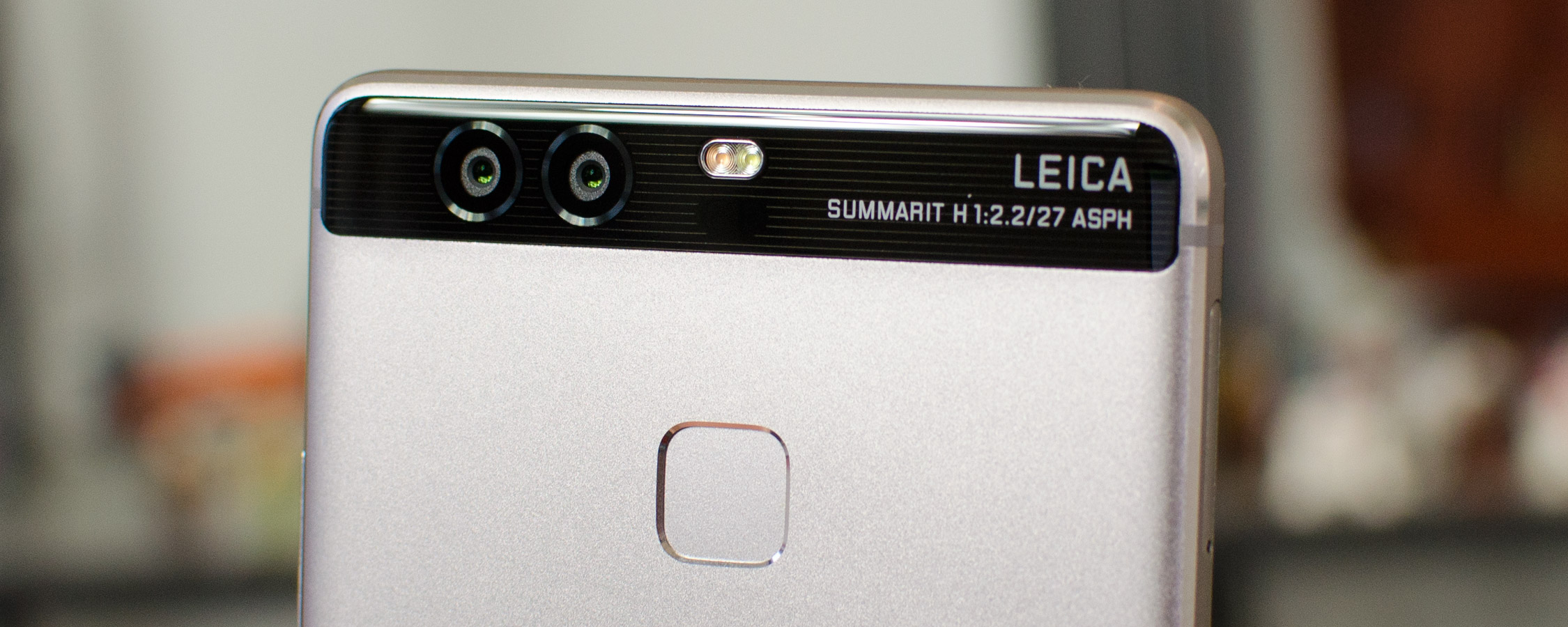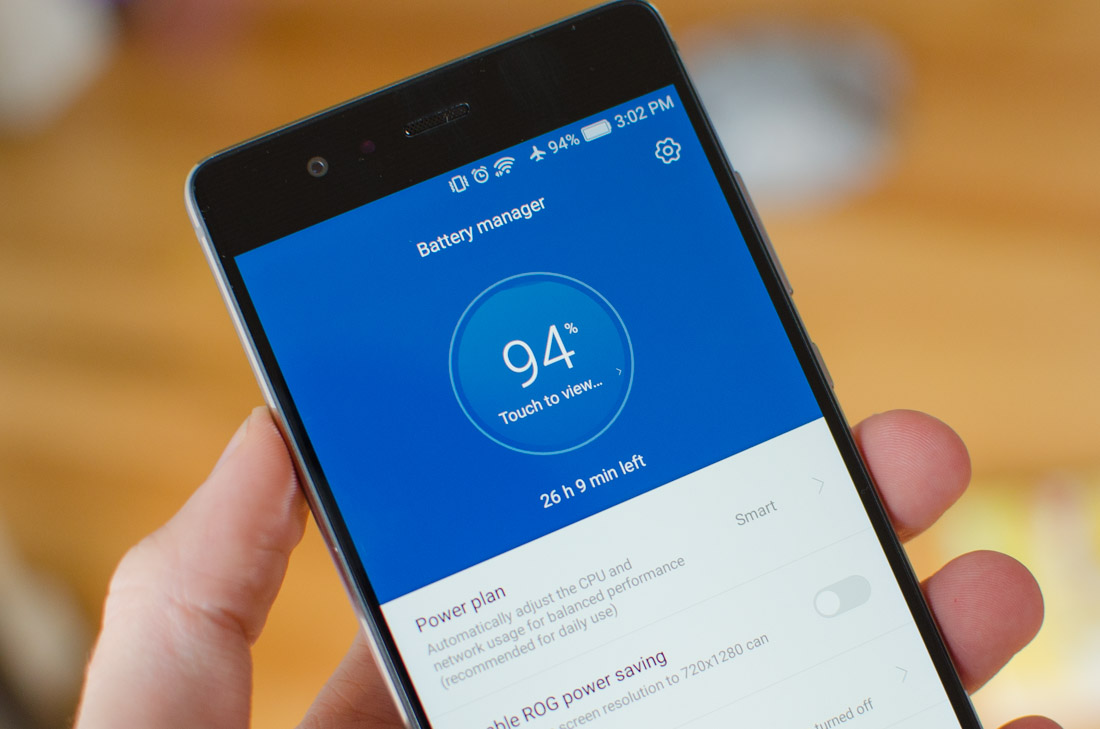Battery Life
Inside the Huawei P9 is a 3,000 mAh (11.55 Wh at 3.85V) battery, which cannot be removed by the user. This battery capacity surprised me, considering the P9 is just under 7mm thick. The Samsung Galaxy S7 is a similar-sized device, also with a 3,000 mAh battery, but it's a good millimeter thicker. The HTC 10 is also thicker for the same battery size, while the LG G5 wastes internal space on its removable 2,800 mAh battery in a 7.7mm thick body.
The P9's battery results will also be interesting as there is a HiSilicon SoC inside rather than the usual Qualcomm silicon. The Kirin 955 does use a modern 16nm FinFET manufacturing process, so it won't have a process disadvantage compared to Qualcomm, but we do already know that the Snapdragon 820 made big strides in performance per watt while cutting down throttling issues.
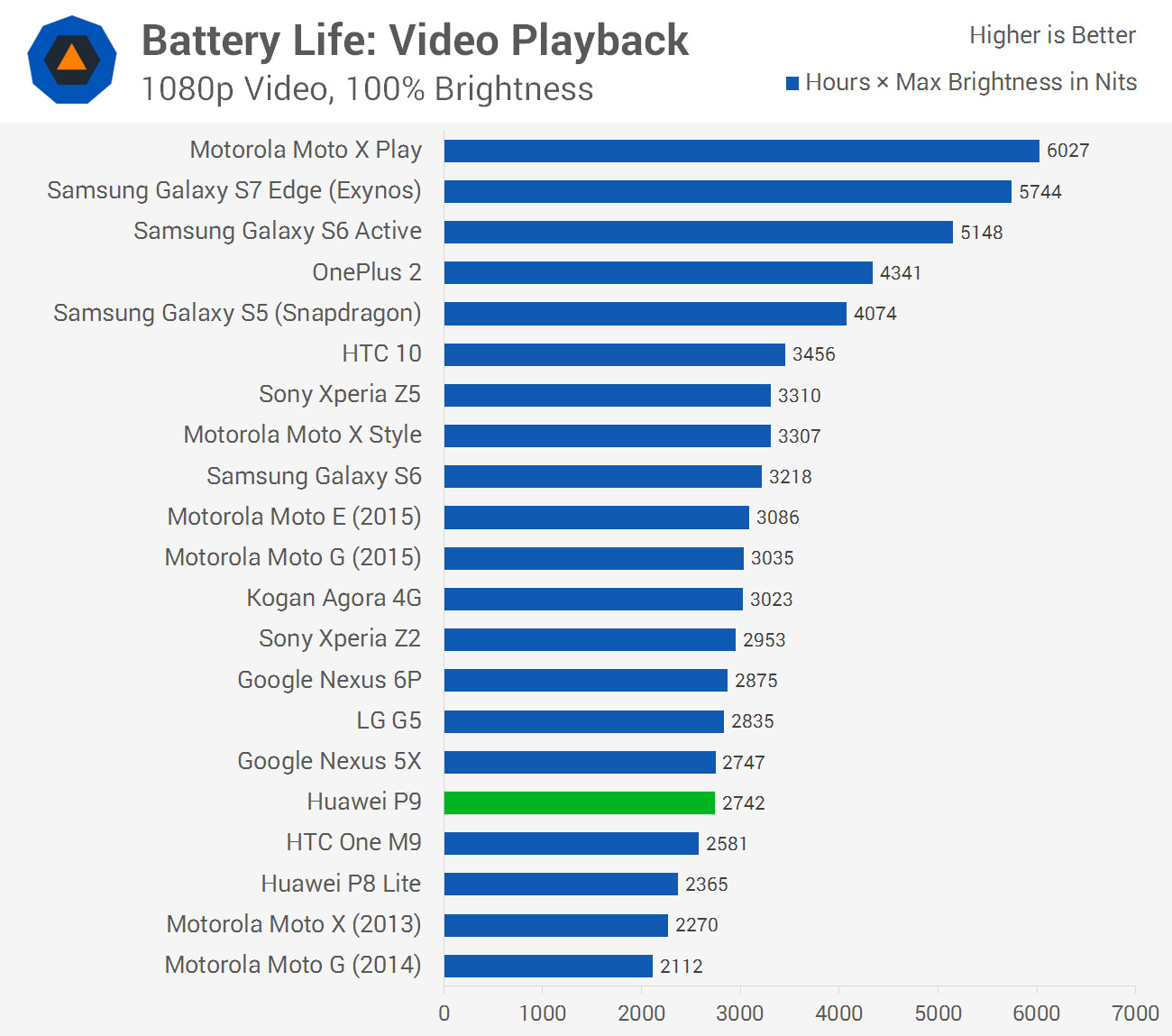
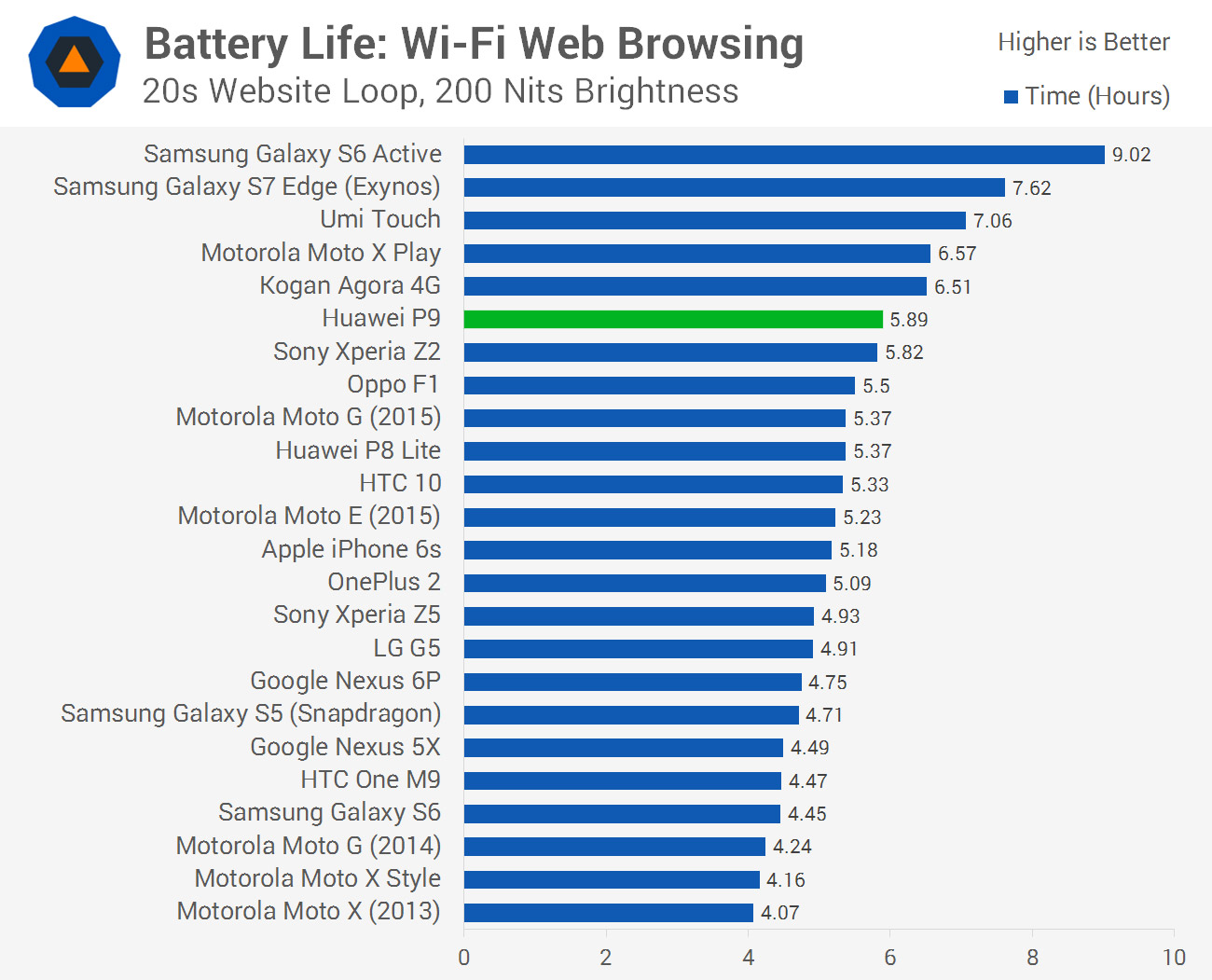
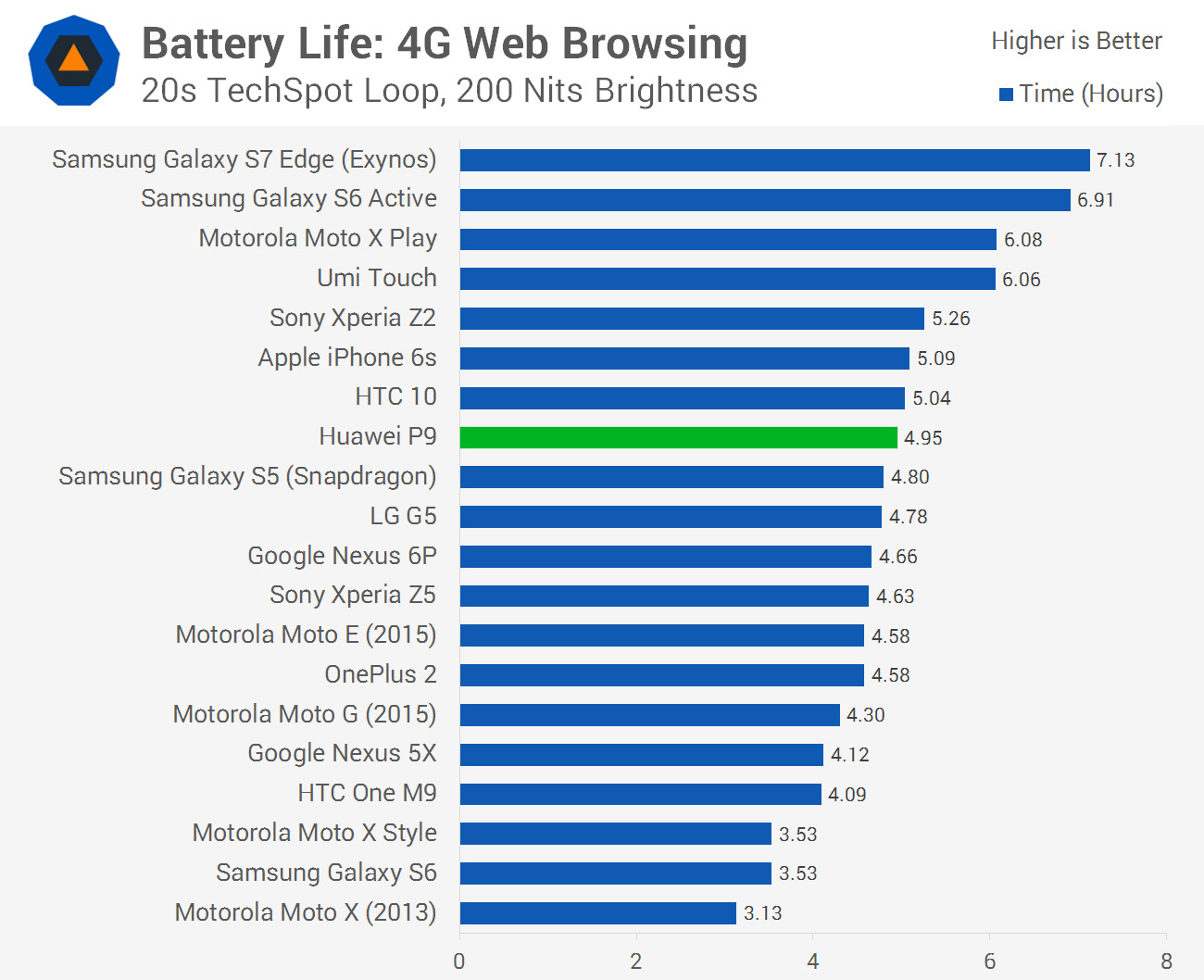
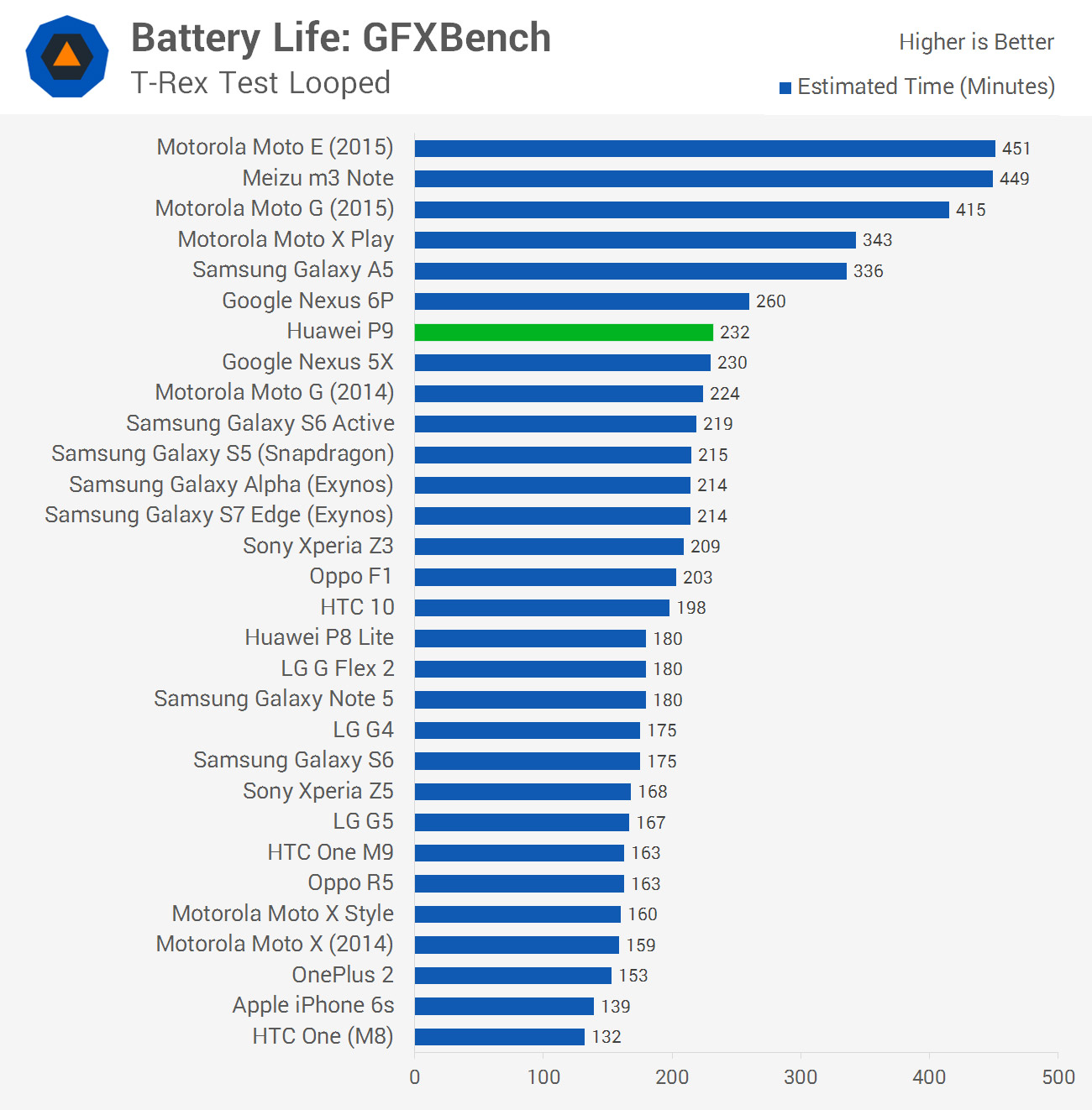
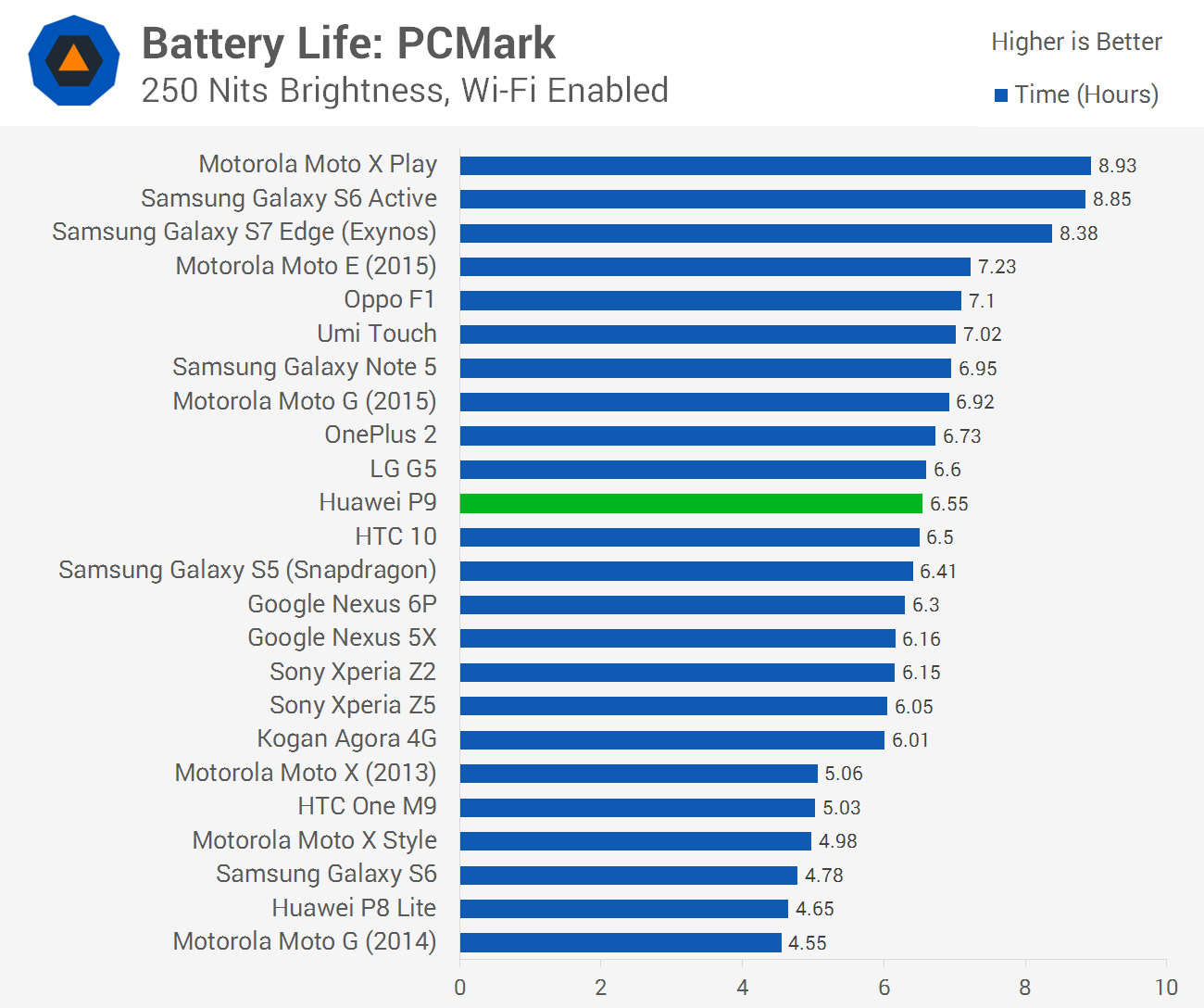
In the above battery benchmarks, the Huawei P9 puts up a standard performance for its SoC and battery capacity. In most situations it delivers slightly above average battery life, which is perfectly fine for everyday use, and it matches or beats competing devices with reasonable battery life like the HTC 10.
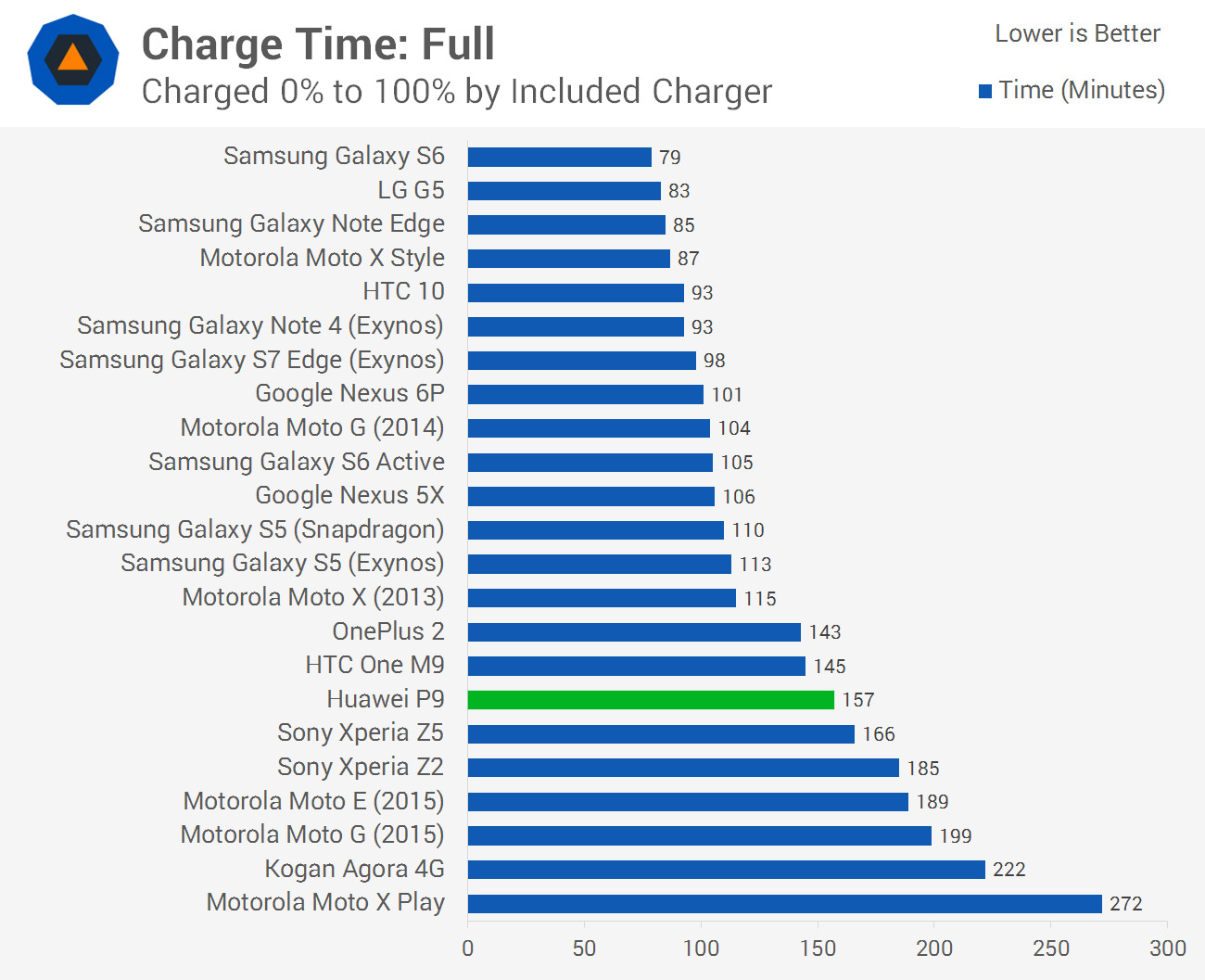
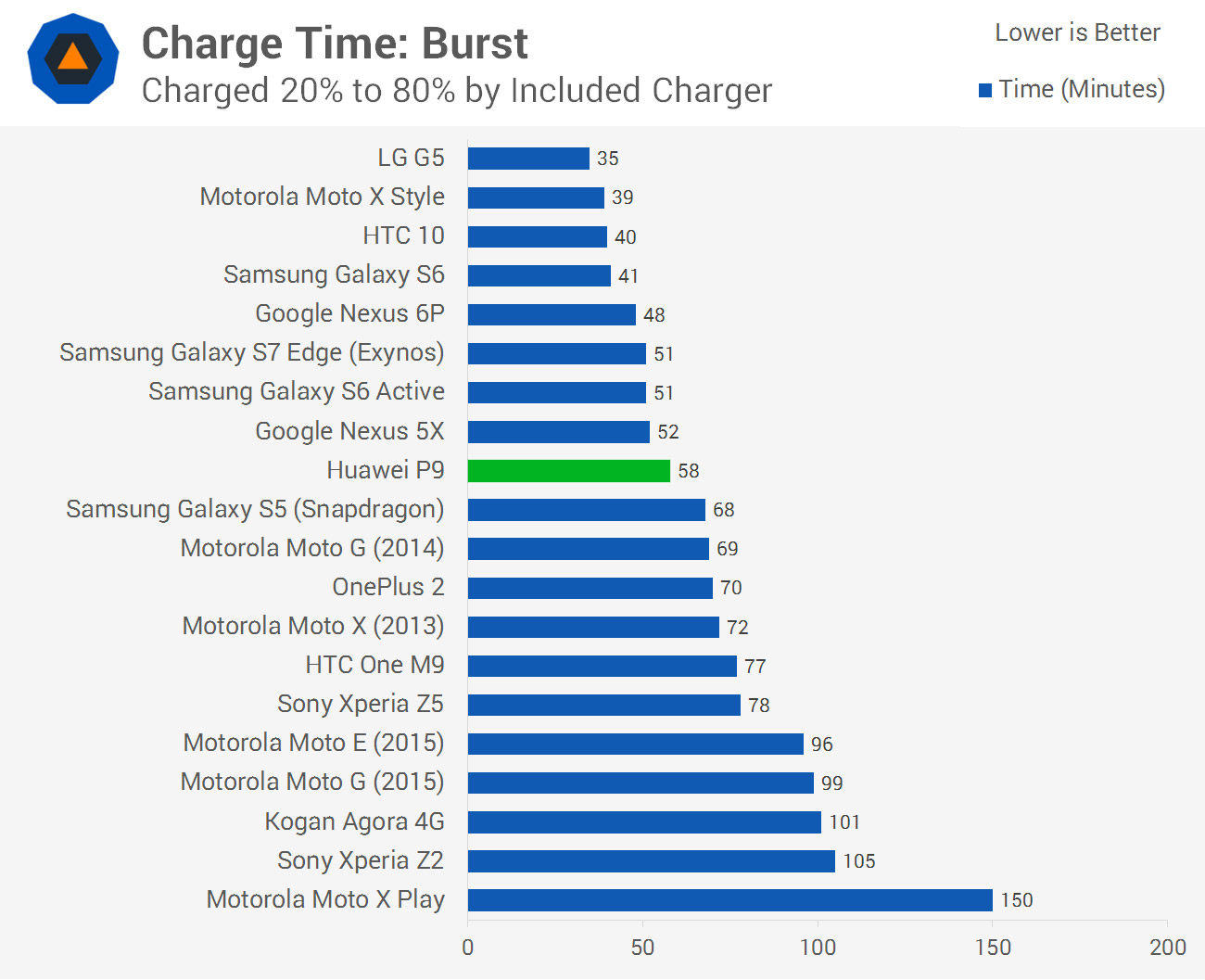
One of the disappointing things about the Huawei P9 is a lack of fast charging. A full charge takes well over two hours, with particularly slow charging between 90 and 100 percent. Burst charging is surprisingly good from the included charger, but it can't match newer flagships with Qualcomm Quick Charge 3.0, like the HTC 10 and LG G5.
